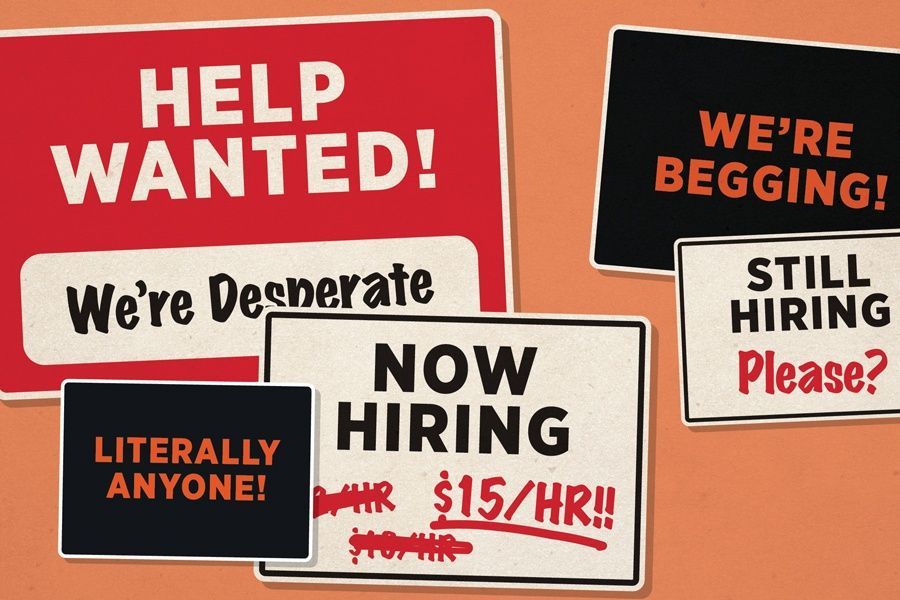Its Time to Understand the Consequences of Trauma
February 2023
Its Time to Understand the Consequences of Trauma
In a previous issue of Leading Outside the Box I talked about the insanity of punishing someone for not having a skill - not being “able.” I recommended that providers and schools move from a punishment model to a teaching/coaching/success-focused model in which when a child/student/client demonstrates by their behavior that they are not “able” to demonstrate a skill that you help them learn it, rather than punishing them for not having it. Punishing a person for what they are not able to do does not result in their becoming able.
In this issue I want to expand further by providing a framework for those lagging or lacking skills. In the field we refer to this set of skills as “Executive Functioning Skills” (EFS).
Do you recognize any of the behaviors listed below?
Can’t sit still
Easily distractible
Impulsive
Can’t plan
Can’t prioritize tasks
Can’t follow a schedule
Can’t remember appointments
Forgets to turn in work
Forgets materials studied
Difficulty with change
Gets overwhelmed
Overreacts to problems
Inflexible
Can’t see multiple ways to solve problems
Sees one way to do tasks
Can’t find needed materials
Space/desk cluttered
Can’t organize or manage time
Doesn’t understand questions
Can’t identify intent
Difficulty with test taking
Can’t make decisions
Can’t follow through
Can’t translate from solving similar problems
Difficulty getting going in morning
Difficulty getting started with a task/chore
Difficulty staying alert/awake when reading or doing work
These are a sample of behaviors associated with a person having a lack of Executive Functioning Skills (EFS).
What are Executive Functioning Skills (EFS)?
They are a set of skills we develop starting as an infant that allows us to meet challenges and accomplish goals. They allow us to organize our behavior, activities, sustain attention, and persist at a task.
Is there a set of these EFS that the professional field agrees on?
No. Different authors define the set different ranging from 8 to12 skills. I identified the 9 most common EFS that are included, even when they label them differently.
1. Attention awareness & control - Inhibitory control – attentional control
2. Time management
3. Working memory
4. Emotional regulation
5. Flexible thinking
6. Organization & materials management
7. Comprehension for studying/test taking
8. Problem solving
9. Energy & alertness
Don’t all children (and adults) have these EFS?
No, that is a false assumption and that is the key point when working with challenging children/students/clients.
If we were raised in a biologically and/or socially toxic environment - one where there is neglect, abuse, substance abuse, domestic violence, poverty, food insecurity, there is an increased likelihood that the person has been traumatized and that results in the stalling the development of their EFS.
The literature is clear that the development of EFS is a sequential process meaning you first must develop one skill before the next. For an infant, 5-12 months old, the initial developmental sequence is:
(1) the ability to demonstrate behavior inhibition (thinking before acting impulsively) then
(2) working memory (ability to hold information in memory (this moves from here and now thinking only to forethought and hindsight) then
(3) internalization of speech (acquisition of language).
In the literature on the impact of trauma, it is clear that the occurrence of trauma delays the child’s development of EFS.
What does this mean to us as helping professionals?
First, it means you must know that all behavior is communications. Our long-standing response of simply focusing on stopping the behavior is inadequate and it does not work. If we recognize that behavior is communications then we need to learn to listen to that behavior, understand the message, and respond appropriately. This is true no matter what the age of the client is.
If it is true that our traditional method of simply punishing has not worked with our clients, then it is time to use a different approach.
Again, the professional literature is clear that we can:
- define a set of EFS that we will use in our setting,
- use a simple assessment tool to identify the behaviors that indicate the child/student/client is lacking certain EFS, and
- teach the child/student/client the missing EFS – this becomes the consequence.
This is how you help challenging (traumatized) children become successful not only in the moment but for their lifetime. Teaching them the skills they come to you without and helping them become “able” will lead to their lifelong success.
How does one begin to implement a model of teaching EFS?
You have to first help the staff come to understand that punishing people for what they are not “able” to do does not work. That means organizations must first STOP using a punishment model with staff. Having a Union contract is not an acceptable excuse. My experience working in unionized settings tells me that when unions understand what the organization is going to do – and really implements using a success-focus rather than a punitive approach – they embrace this. They, based on their historical experience with their organization, don’t trust that the organization will really use this and hold everyone to it, so they remain rightly skeptical. That is management’s responsibility to demonstrate that it will occur at all levels.
Parallel Practice tells us you start by setting up the organization and how it works with its employees in the parallel practice model. That means teaching all managers, supervisors, and even the CEO how to work in a success-focused coaching and teaching model rather than a punishment-based model. This includes Human Resources practices which are typically punishment based.
The greatest challenge for organizational leaders is helping its staff grasp that a punishment-based model does not result in success with those who are most challenging and who have not responded positively to the current system.
Staff will say, yes but it worked with the other 80%. The truth is for the 80%, if you set clear expectations and hold people accountable for meeting those expectations, not under threat of punishment, but as how to become successful in the world it will work with them also. The idea is to adopt a model that will work with 100% of your clients and staff.
As our workforce of direct service staff continues for become increasing Generation Y, ages 26 – 41 and Generation Z, 10 – 25 years old, they have tried to tell us how we must change.
Most of us have not listened to their words or their behavior and so we have increasing challenges with being able to hire line staff and retaining them – that’s the proof our current organizational system is not working.
These generations report that almost no organization tells employees what they need to do to be successful in clear behavioral language, they prefer to use undefined adjectives like shows creativity, shows initiate, team player, and the infamous “does other duties as assigned.”
And Gen Ys and Zs quit at a higher rate than any previous generations. Independent studies of why they quit consistently identify it’s because (1) the agency doesn’t know what it wants – can’t tell me what I need to do (behavior) to get an A, be successful (2) gives no recognition of performance on any frequency and (3) has and uses threats of disciplinary action up to and including termination to motivate staff. It doesn’t motivate, it alienates Gen Ys and Zs and yet most organizations won’t let go of it because it worked historically for previous generations.
To be successful is a two-stage response:
First change how you supervise/ manage staff to a success-focus and eliminate the punishment focus of the past. I recommend Success-focused Supervision as the model for this.
Second, you assess for lacking/lagging/missing executive functioning skills when new staff and new clients arrive. And if they lack them then you teach them those skills rather than punish them for not already having them. I recommend implementing a EFS program for intake and treatment.
=============================================================
LEADING FROM OUTSIDE THE BOX is a monthly newsletter for human services leaders.
Its purpose is to challenge your thinking and help you improve organizational and outcome performance.
To receive your copy free, simply email Jeff Bormaster and ask to be added to the mailing list. Feel free to share these newsletters with other human services leaders, simply include the contact information.
You can read previous issues of Leading Outside the Box at www.jeffbormasterconsulting.com/topics










